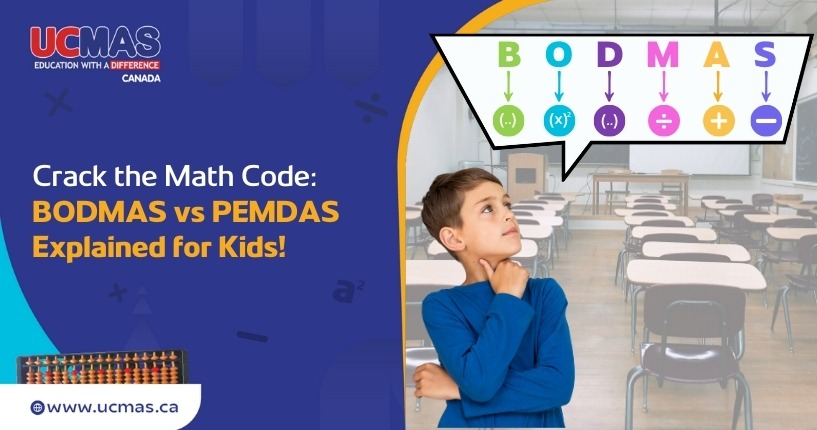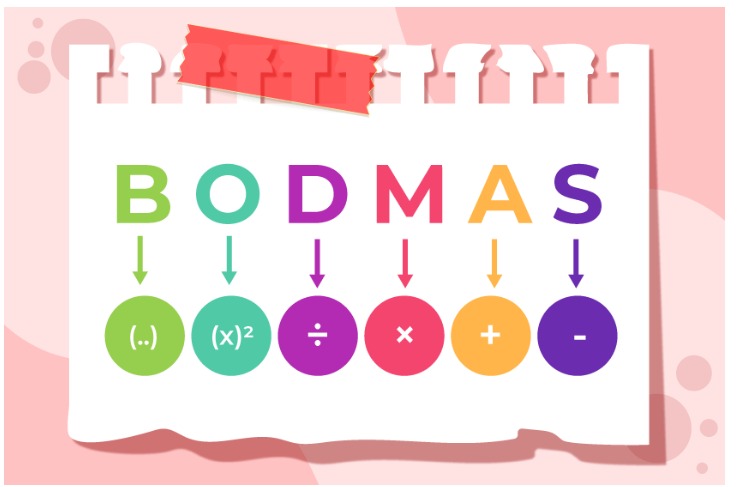
Have you ever encountered a math problem that left you puzzled because different people arrived at different answers? The key to consistent results lies in understanding the order of operations. Two commonly used acronyms that guide this process are BODMAS and PEMDAS. But are they truly different? Let’s unravel this mathematical mystery!
Decoding the Order of Operations
In mathematics, the sequence in which we perform operations is crucial to ensure consistency and accuracy. The order of operations provides a standardized approach, ensuring that everyone interprets and solves expressions uniformly.

The acronyms BODMAS and PEMDAS serve as mnemonic devices to help remember this sequence. Here’s what they stand for:
BODMAS (common in the UK and other Commonwealth countries):
- Brackets
- Orders (another term for exponents, including powers and roots)
- Division
- Multiplication
- Addition
- Subtraction
PEMDAS (widely used in the USA and some other regions)
- Parentheses
- Exponents
- Multiplication
- Division
- Addition
- Subtraction
At first, they might appear different, but in reality, they follow the same fundamental principles.
Do BODMAS and PEMDAS Yield Different Results?
Not at all! Despite the variation in terminology, both acronyms adhere to the same fundamental principles:
- Brackets/Parentheses: Solve expressions within these first.
- Orders/Exponents: Address exponents (powers and roots) next.
- Division and Multiplication: Perform these operations from left to right, whichever comes first.
- Addition and Subtraction: Finally, carry out these operations from left to right.
It’s important to note that multiplication and division are of equal precedence; they are performed sequentially from left to right, as they appear in the expression. The same applies to addition and subtraction. This left-to-right rule ensures consistency in solving expressions.
Example Expression:
(6+4)(exponent 2)÷5×3−8+12
Step-by-step solution using BODMAS/PEMDAS
- Brackets (B) / Parentheses (P)
(6+4)=10
Now, the expression becomes:
10 (exponent 2) ÷ 5 × 3 − 8 + 12 - Orders (O) / Exponents (E)
10 (exponent 2) =100
Now, the expression becomes:
100÷5×3−8+12 - Division (D) and Multiplication (M) (left to right)
100÷5=20
20×3=60
Now, the expression becomes:
60−8+12 - Addition (A) and Subtraction (S) (left to right)
60−8=52
52+12=64
The final answer is 64.
The UCMAS Advantage in Mastering Math
At UCMAS Canada, we focus on developing strong mental math skills in children aged 5-13 through our globally recognized and scientifically proven abacus-based program. Understanding the order of operations is fundamental to mathematical proficiency. Our engaging curriculum not only enhances calculation abilities but also revolutionizes learning by fostering concentration, observation, visualization, and memory—skills that are essential for academic success. By mastering concepts like BODMAS/PEMDAS, UCMAS students gain the confidence to tackle complex mathematical problems efficiently.
Different Acronyms, Same Mathematical Principles
So, are BODMAS and PEMDAS different? Not really! They are just two ways of remembering the same mathematical rule. No matter where you are, mastering the order of operations ensures your math calculations are always correct.
Ready to elevate your child’s math skills? At UCMAS Canada, we go beyond traditional learning methods to nurture confidence, accuracy, and speed in mental arithmetic. Our proven abacus-based training sharpens cognitive abilities and instills a love for numbers in young minds. Give your child the competitive edge they deserve — enroll now at UCMAS and set them on a path to lifelong success in math and beyond! Contact us today to learn more about our programs and take the first step toward unlocking your child’s full potential.





